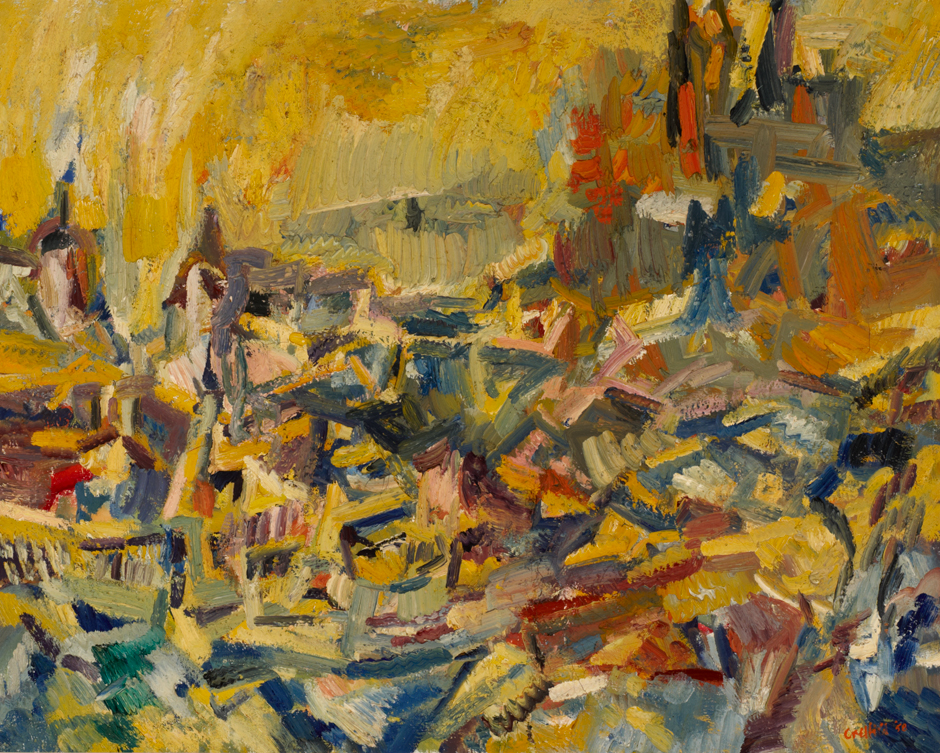In the summer of 1951, just six years after the end of the Second World War, the Festival of Britain transformed the South Bank of the Thames into a dazzling celebration of national renewal. Billed as a “tonic for the nation” by its Director General, Sir Gerald Barry, the Festival was both a public morale-booster and a cultural showcase—marking the centenary of the Great Exhibition of 1851 and asserting a confident vision for modern Britain.
From May to September, millions visited the pavilions, sculptures, and design exhibitions, encountering everything from architectural models to futuristic fabrics, modernist furniture to cutting-edge art. Across the country, satellite exhibitions in Edinburgh, Glasgow, and via a travelling programme brought this optimistic vision to the nation at large.
Art and the Festival: A National Stage
At the heart of the Festival was a belief in culture as public good. The Arts Council was charged with commissioning new work from 12 sculptors and 60 painters to form the visual centrepiece of the arts programme. These artists—among them Henry Moore, Barbara Hepworth, John Piper, Graham Sutherland, and Jacob Epstein—were already central to the post-war art establishment.
The Arts Council stipulation was ambitious: works had to be no smaller than 45 x 60 inches, on a subject of the artist’s choosing. The results ranged from the expressive to the abstract, and the Festival’s art was displayed not only in London but across the UK, in a deliberate attempt to decentralise and democratise access to modern art.
Among those featured in the Arts Council’s 60 Paintings for ’51 were rising stars like Lucian Freud, William Gear, Patrick Heron, and Claude Rogers. Five paintings were ultimately acquired by the Arts Council—an endorsement of the era’s most establishment-approved artists.
The Borough Group and the Festival: A Telling Absence
And yet, conspicuously absent from this cultural celebration were David Bomberg and the students of the Borough Polytechnic—despite Bomberg's profound influence on a younger generation of British painters.
For Bomberg, who had once been lauded as a vanguard figure of modernism and was a founding member of the London Group, the Festival of Britain could have marked a powerful moment of national recognition. The opportunity to paint at scale, to reflect the spirit of post-war regeneration, and to contribute to a public conversation about art and society—these were ideals aligned closely with Bomberg’s own sensibilities.
But the omission speaks volumes. By 1951, Bomberg was largely overlooked by the cultural establishment. His anti-academic approach to teaching, his passionate belief in art as a spiritual and physical encounter, and his resistance to institutional norms had placed him outside the official narrative of British art. The Festival’s curators preferred the more palatable, marketable modernism of Moore, Hepworth, and Sutherland to the raw, vital work being produced in Bomberg’s Borough classroom.
A Legacy of Neglect, and a Reappraisal
In retrospect, the Festival’s exclusion of Bomberg and the Borough Group feels like a missed opportunity. While it succeeded in capturing the energy of some aspects of post-war creativity, it failed to acknowledge the deeper, slower revolutions taking place in classrooms and studios just a few miles away.
The Borough Road Archive preserves this overlooked legacy—a parallel narrative of post-war British art driven by intensity, experimentation, and commitment to truth in painting. Bomberg may not have been celebrated on the South Bank in 1951, but his influence would endure far beyond the bunting and fanfare of the Festival.
Today, as we revisit these national moments of celebration, it's equally important to consider who was left out—and why.
Further Exploration:
60 Paintings for '51 (Arts Council archives)
Ten Decades: A Review of British Taste, ICA, 1951
Masterpieces of Victorian Photography, Arts Council, 1951

